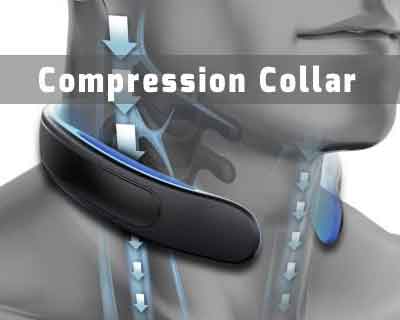- Home
- Editorial
- News
- Practice Guidelines
- Anesthesiology Guidelines
- Cancer Guidelines
- Cardiac Sciences Guidelines
- Critical Care Guidelines
- Dentistry Guidelines
- Dermatology Guidelines
- Diabetes and Endo Guidelines
- Diagnostics Guidelines
- ENT Guidelines
- Featured Practice Guidelines
- Gastroenterology Guidelines
- Geriatrics Guidelines
- Medicine Guidelines
- Nephrology Guidelines
- Neurosciences Guidelines
- Obs and Gynae Guidelines
- Ophthalmology Guidelines
- Orthopaedics Guidelines
- Paediatrics Guidelines
- Psychiatry Guidelines
- Pulmonology Guidelines
- Radiology Guidelines
- Surgery Guidelines
- Urology Guidelines
Compression collar may protect athletes from brain injuries

New York : Wearing a specifically designed compression collar around the neck may prevent or reduce the devastating effects of head collisions in sports, researchers have found.
Inspired by woodpeckers and bighorn sheep, the neck device, called a Q-Collar, is designed to press gently on the jugular vein to slow blood outflow increasing the brain's blood volume.
The resulting effect of the increased blood volume helps the brain fit tighter within the skull cavity, reducing the energy absorbed by the brain during collisions.
The analysis of neuro physiological and neuro anatomical data from the brain showed athletes in the non-collar wearing group had significant functional and structural changes to white matter regions of the brain but these changes were not evident in those who did wear the Q-Collar during play, findings from two studies showed.
"White matter of the brain essentially connects all the pathways including structure and function," explained lead author of both studies Greg Myer, director of sports medicine research at Cincinnati Children's Hospital Medical Center in Ohio, US.
In the preliminary study published in Frontiers in Neurology, 15 high school hockey players took part.
Half wore the collar for the hockey season and the other half did not.
Each of the helmets for the athletes was outfitted with an accelerometer to measure every head impact.
Results from the imaging and electro physiological testing indicated that athletes in the non-collar wearing group had a disruption of micro structure and functional performance of the brain.
Athletes wearing the collar did not show a significant difference despite similar head impacts.
In a follow-up study published in the British Journal of Sports Medicine, 42 football players from two Greater Cincinnati high schools participated.
While half of the participants wore the collar, the other half did not.
The results of this larger study showed similar protective effects of collar wear during the football season.
"The results of the studies demonstrate a potential approach to protecting the brain from changes sustained within a competitive football and hockey season, as evidenced by brain imaging," Myer said.

Disclaimer: This site is primarily intended for healthcare professionals. Any content/information on this website does not replace the advice of medical and/or health professionals and should not be construed as medical/diagnostic advice/endorsement or prescription. Use of this site is subject to our terms of use, privacy policy, advertisement policy. © 2020 Minerva Medical Treatment Pvt Ltd